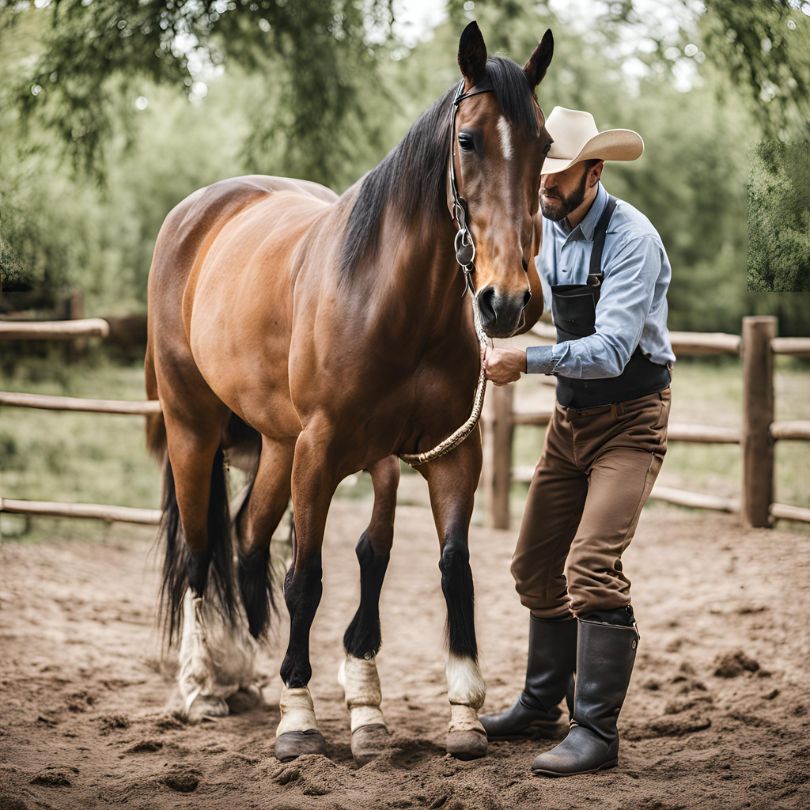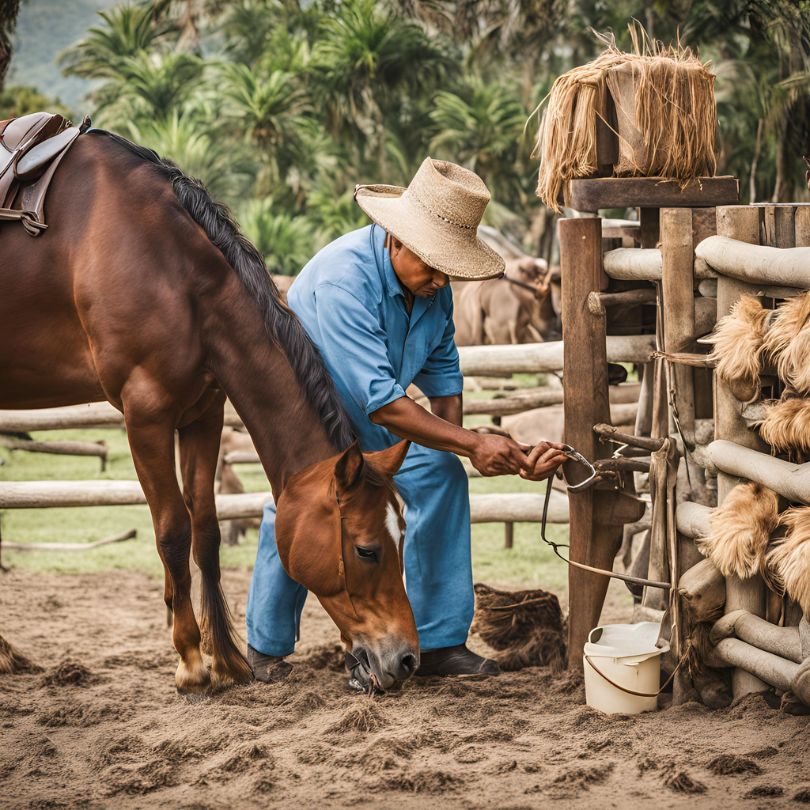Proper hoof care is one of the most important aspects of maintaining a horse’s health and performance. Hooves not only support a horse’s weight but also play a crucial role in movement, balance, and shock absorption. Ignoring hoof care can lead to a variety of painful and debilitating conditions that could affect a horse’s quality of life. Here’s a comprehensive guide to understanding and caring for your horse’s hooves.
1. Understanding the Anatomy of the Horse Hoof
The hoof is a complex structure made up of multiple parts, each playing a vital role in the horse’s mobility and stability:
• Hoof Wall: The outermost, hard part that provides protection and support. It is comparable to a human fingernail but much thicker and tougher.
• Frog: The V-shaped structure on the bottom of the hoof that helps with shock absorption and provides traction.
• Sole: The area between the hoof wall and the frog. It protects the sensitive structures within the hoof and helps support the horse’s weight.
• Bars: Ridges on either side of the frog that contribute to hoof stability.
• White Line: The junction between the sole and the hoof wall; it helps secure the hoof wall to the inner structure.
2. Daily Hoof Care: The Foundation of Healthy Hooves
Daily care is essential to maintaining a horse’s hoof health. Here are some fundamental practices:
• Regular Cleaning: Use a hoof pick to clean out dirt, rocks, manure, and other debris from the hoof. Pay special attention to the grooves on either side of the frog, as these areas can trap bacteria and moisture, leading to infections.
• Inspect for Injuries: During cleaning, check for any cuts, cracks, or punctures. Look for any signs of heat or swelling in the hoof, which could indicate an infection or injury.
• Check for Odors: A foul odor could be a sign of thrush, a bacterial infection in the frog that occurs in moist and unsanitary conditions. If you detect an unpleasant smell, consider using a thrush treatment product.

3. Maintaining a Consistent Farrier Schedule
Regular trimming and shoeing are essential for hoof health and should be performed by a professional farrier.
• Trimming: Hooves grow continuously, so they need regular trimming to maintain a balanced, healthy shape. Untrimmed hooves can grow unevenly, putting stress on the horse’s legs and causing lameness.
• Shoeing: Not all horses require shoes, but those that do heavy work, have sensitive hooves, or need additional support may benefit from them. A farrier will apply, adjust, or remove shoes based on the horse’s needs.
• Frequency: Typically, horses need a farrier visit every 4-8 weeks, depending on factors like hoof growth rate, activity level, and environment. Regular visits ensure that any emerging issues are addressed before they become major problems.
4. The Importance of Proper Diet and Hydration
Nutrition is key to healthy hoof growth. A well-balanced diet rich in essential vitamins, minerals, and proteins will contribute to strong, resilient hooves.
• Biotin: This B vitamin is known to promote hoof growth and strength. Many hoof supplements contain biotin as a primary ingredient.
• Zinc and Copper: These minerals aid in the formation of keratin, the protein that makes up the hoof wall.
• Omega-3 Fatty Acids: Found in flaxseed or fish oil, omega-3s help maintain moisture in the hoof, reducing the risk of cracking and chipping.
• Water: Proper hydration is critical for healthy hooves. Horses that are dehydrated may experience dry, brittle hooves that are more susceptible to cracks and injuries.
5. Understanding and Preventing Common Hoof Problems
Some common hoof conditions can affect your horse’s well-being. By knowing what to look for, you can take proactive steps to prevent or address these issues.
• Thrush: Thrush is a bacterial infection that affects the frog, often caused by dirty, wet environments. Regular cleaning and dry bedding can help prevent thrush.
• Laminitis: This painful inflammatory condition affects the inner structure of the hoof, leading to lameness. Causes include obesity, overfeeding of grain, and high-starch diets. Prevent laminitis by managing diet, ensuring proper weight, and providing a balanced exercise routine.
• Abscesses: Abscesses are pockets of infection within the hoof caused by bacteria entering through small cracks or injuries. Symptoms include sudden lameness and heat in the affected hoof. Treat abscesses by cleaning, soaking the hoof, and consulting a veterinarian if needed.
• Cracks: Hoof cracks can occur due to environmental factors, poor nutrition, or irregular trimming. Keep hooves well-trimmed and moisturized, and ensure a balanced diet to prevent cracks.

6. Seasonal Hoof Care Considerations
The weather and environment can affect hoof health, so it’s essential to adjust care practices according to the season:
• Winter: Snow and ice can make hooves more vulnerable to cracking and chipping. Apply hoof moisturizers to keep hooves from becoming brittle, and use ice studs or pads for horses that are shod.
• Spring: Wet, muddy conditions increase the risk of thrush. Make sure your horse’s environment is dry and clean, and avoid letting hooves stay in mud for extended periods.
• Summer: Dry conditions can make hooves brittle. Use hoof moisturizers, and provide a shady area with access to water.
• Autumn: Fallen leaves and damp ground can harbor bacteria, so keep pastures and stables clean to avoid infections.
7. When to Call a Veterinarian or Farrier
While daily hoof care and regular farrier visits can prevent most issues, sometimes professional intervention is necessary:
• Signs of Lameness: If your horse is limping, moving abnormally, or showing discomfort, it may be a sign of a hoof problem.
• Persistent Heat or Swelling: Warmth or swelling in the hoof or leg could indicate an infection or other injury that requires medical attention.
• Changes in Behavior: Reluctance to move or signs of pain can indicate hoof problems.
8. Choosing Hoof Care Products Wisely
The market is filled with hoof care products, so it’s important to select those that suit your horse’s specific needs:
• Hoof Moisturizers: These help prevent cracking, especially in dry climates. Apply moisturizers regularly, especially during summer.
• Hoof Hardeners: Useful for horses with weak or soft hooves, hoof hardeners can improve hoof integrity.
• Thrush Treatments: These products disinfect and dry out areas affected by thrush. Use sparingly, as excessive use can dry out healthy hoof tissue.
Taking care of your horse’s hooves is a daily responsibility that pays off in the long run. A healthy hoof supports every aspect of a horse’s life, from work to play. By staying committed to regular cleaning, nutrition, farrier care, and prevention, you can keep your horse’s hooves in top shape, ensuring comfort, mobility, and overall health.
Regular attention and proactive care are the foundations of successful hoof management. With these steps, you’ll be well-equipped to ensure the health and happiness of your horse for years to come.

